
How To Run With Your Dog
Running with your pup is a great way to bond together. Let’s learn more about how to train your dog to run with you!
How To Train Your Dog To Run With You
Going on a run with your dog is a great way for you and your dog to stay active. Not only is it an excellent activity to get blood pumping, but it’s also a great way for you and your pup to bond.
You can’t run your dog long distances right off the bat, though. You’ll need to train with your dog and work up their stamina, just like you train, yourself, to run longer distances!
If you’re looking to train your dog to run with you, we can help. Let's get started with the basics.
Dogs Are Natural Runners
It’s important to consider distance before starting your runs with Fido since some dog breeds are much better distance runners than others. Don’t expect your pug to qualify for the Boston Marathon.
Once you’ve set your distance goal, you can determine whether or not your dog is physically suited to run with you.
Which Dog Breeds Make the Best Running Partners?
Some breeds in particular love the need for speed, especially on a run alongside Mom or Dad.
Check out some of the best jogging buddies below:
- Golden Retrievers
- Border Collies
- Siberian Huskies
- Boxers
- Dalmations
- Labrador Retrievers
- German Shepherds
- Springer Spaniels
There are also dog breeds that should avoid running long distances. Why? Because of the shape of their faces. Dogs with brachycephalic faces, i.e. short-snouted flattened faces, may experience trouble breathing after even a short sprint. These breeds include (but aren’t limited to) Pugs, French Bulldogs, and Shih Tzus.
You should also be mindful of the size of your breed — while a young Husky may be able to keep up a trot on that mile-long trail, an adult Jack Russell might not be able to handle that kind of pace for that long.
Is My Dog Too Young Or Too Old?
Age matters.
Puppies aren’t the best choice when it comes to running partners. Since they are still growing, they are more susceptible to injury if they try to run long distance.
Just like an overexcited child, your pup may not know when to stop because they’re just having such a darn good time!
Most experts agree that puppies shouldn’t be taken along on runs before about a year old, with the AKC even suggesting holding off until about a year and a half.
If you are unsure when you should start running with your dog, consult with your veterinarian — they’re the best source to get answers specific to your sidekick.
On the other side of the spectrum, there is no set “age limit” for your dog to start staying behind when you go for your morning jog — the best thing to do is to just keep an eye on the way your dog moves about as they approach old age.
You’ll want to watch for signs of hip or joint problems like particularly slow or stiff movement, especially when ambulating stairs, going out to potty, or climbing onto furniture.
If they don’t seem quite as agile as they used to be, stick to a walking pace to keep exercise doable for your senior pup.
Training and Conditioning
Walk then run.
Before picking up speed, ask yourself the question: Does my dog have good leash etiquette? If the answer is no, then start here and build a foundation for good leash behavior. You wouldn’t want to take a tumble because Fido is pulling the leash!
Loose Leash Walking
If you are unsure of what a loose leash walk is, picture this: your dog is on your left-hand side when walking, and you are holding the leash in your right hand. With your dog staying to your left, the remainder of the leash loosely drapes in front of you, forming the shape of the letter “J.”
The best way to train for a loose leash walk is with their favorite reward, whether that’s a fancy treat or some extra praise.
You’ll also want a collar or harness that fits your pup well, and a four to six-foot leash. Be sure to stay away from retractable leashes, as they can make leash training difficult for you and your pup since they are virtually impossible to control.
When it comes to training your pup, patience is key. It can be an exhausting, frustrating, and lengthy process, but it’ll pay off!
It’s best to start in an area where your dog doesn’t have a lot of distractions. Instead, focus on the commands you tell to your dog.
By following the below steps, you’ll be one step closer to successfully training your pup to run (or walk) with you!
- Keep the treats accessible and in quick reach, either in a pouch or in your pocket.
- Determine the side you want your dog to walk on. Then, hold a few treats in your hand on the preferred side.
- Keep the leash in the opposite hand with the leash crossing your body loosely in the shape of the letter “J.”
- Now, take a step and stop. Give your pup a treat at their height, right next to your leg.
- Take two steps this time, then stop. Did your dog rush ahead of you? If so, that’s okay! But don’t reward them immediately. Instead, use the treats to encourage them back to your side, take two or three steps forward once more, then hand over the reward.
- Gradually increase the number of steps you take before each treat.
- Once your pup is walking well on the loose leash, decide on the word or phrase you want to use to release them. Examples include saying, “all done,” or “okay.”
While training your dog, feel free to talk to them and keep their attention focused on your actions and commands. After all, it’s easy for them to get distracted!
To take the training a step further, you can also build in speed cues when your dog is ready. Phrases such as “let’s go” or “get running,” for example, can make your dog aware that it’s time to move it. To teach speed cues, tell your pup the cues right before you are about to pick up speed.
There are also a few things to watch out for when training your pup:
- Pulling: Letting them know that you are in charge and want them to walk beside you, not in front of or behind you.
- Weaving: i.e., walking from left to right in front of you — this easily becomes a trip hazard.
If you find your pup getting anxious or upset during the training process, it’s okay to slow down the training process.
Warm-Ups
Warm-ups are important for your dog because they can help prepare your dog for a run or walk, just like the way you stretch before your own run. They can not only help your dog avoid injury, but can also help prime them that it’s time for some extra obedience.
Here are some ways you and your pup can warm up for a run:
- Loose leash walk for about five minutes.
- Use cues. Have your pup change positions using different combinations of basic cues such as sit, down, and stand.
- Do small, trotting-pace Figure 8’s.
Building Strength and Endurance
Don’t expect your pup to be ready to run a 5K the first time around. Just like us, they need to build up their strength and endurance through training.
To begin the process, add short bursts of jogging and running into your routine walks. Then, every other walk, increase the interval of the jog while decreasing your walking time. It may take a few weeks, but before you know it, both you and your dog will be running longer distances in no time.
Running in the Elements
Depending on where you live, what season is in effect, and the temperature extremes that may follow, running in the great outdoors can be a hazard to your pet’s health.
Warm Weather Running
Because your pup is covered in fur, high temperatures can be dangerous for them to run in. The way dogs cool down after a run is different from humans; while we sweat, dogs pant.
Consider bringing your dog a water bottle or collapsible bowl to rehydrate them after or even halfway through the run. More importantly, be aware of the signs of heat exhaustion, like excessive panting, lethargy, loss of coordination, or heavy drooling.
If your dog is overheating, you can spray them with cool (not cold) water, put them in front of a fan, and offer them a cool bowl of water.
Cold Weather Running
Just like warm weather, excessively cold weather isn’t the most ideal climate for your pup to run in, either, mostly because of the various risks that are posed to their paws.
If there’s snow on the ground, it can get packed into your dog’s paws, causing damage by building up between their toes.
Road salts during the colder months can also be harmful. While some salts or ice melts are safe for pets, most of them will irritate paws and can result in chemical burns.
After a cold-weather run, bring your pup inside and give those paws a good washin’. You can also train your dog to wear shoes or booties for even more protection. Prevention is always your friend, so it may be worth picking up pad balm (think chapstick for their paws) during your next visit to the pet store.
Top Tips For a Successful Run
Once you are done training your pup, taking them on their first run can be a new and exciting experience. The following tips can help you and your dog stay safe during a run:
- Plan your run in the early morning or the late afternoon. It’s best not to run during the hottest part of the day, which is usually around noon to 2 pm.
- Warm-up before a run. The same goes for afterward — it’s always a good idea to cool down and stretch.
- Check the weather before heading outside, and plan accordingly.
- Stay hydrated! Bring water for both you and your pet.
- Take breaks. Depending on the distance, allow your pet a break once in a while to just breathe, sit, and recharge.
- Know your dog’s limits and watch for signs of distress, such as excessive panting or falling behind.
- Consider using a hands-free leash. This allows you to move your arms properly when running.
Do what you can to support your pup’s hips and joints. Running can be taxing on the hips and joints! Just like humans need to run with proper posture, wear the right shoes, and stay nourished to get a good run in, dogs need support, too, and this can come in the form of a joint supplement that works to support joint health and mobility so your sidekick can stay at your side for many runs to come!
Off to the Finish Line!
Congratulations on training your dog! It doesn’t matter if it's short runs or long runs; the fact that you and your dog are now enjoying each other’s company while staying fit is an awesome feat!
Remember, it’s important to adjust your running pace and distance as you build up your pup’s speed and endurance over time. If at any point you have doubts or questions about your dog’s ability to keep up, you can always give your vet a call for advice.
Sources:
How to Train Your Dog to Run With You | AKC
How to start running with your dog | Ontario SPCA
Teach your dog to walk on a loose leash | Animal Humane Society
Teaching Loose Leash Walking | Guide Dog
Protect your dog's paws from winter weather | Animal Humane Society

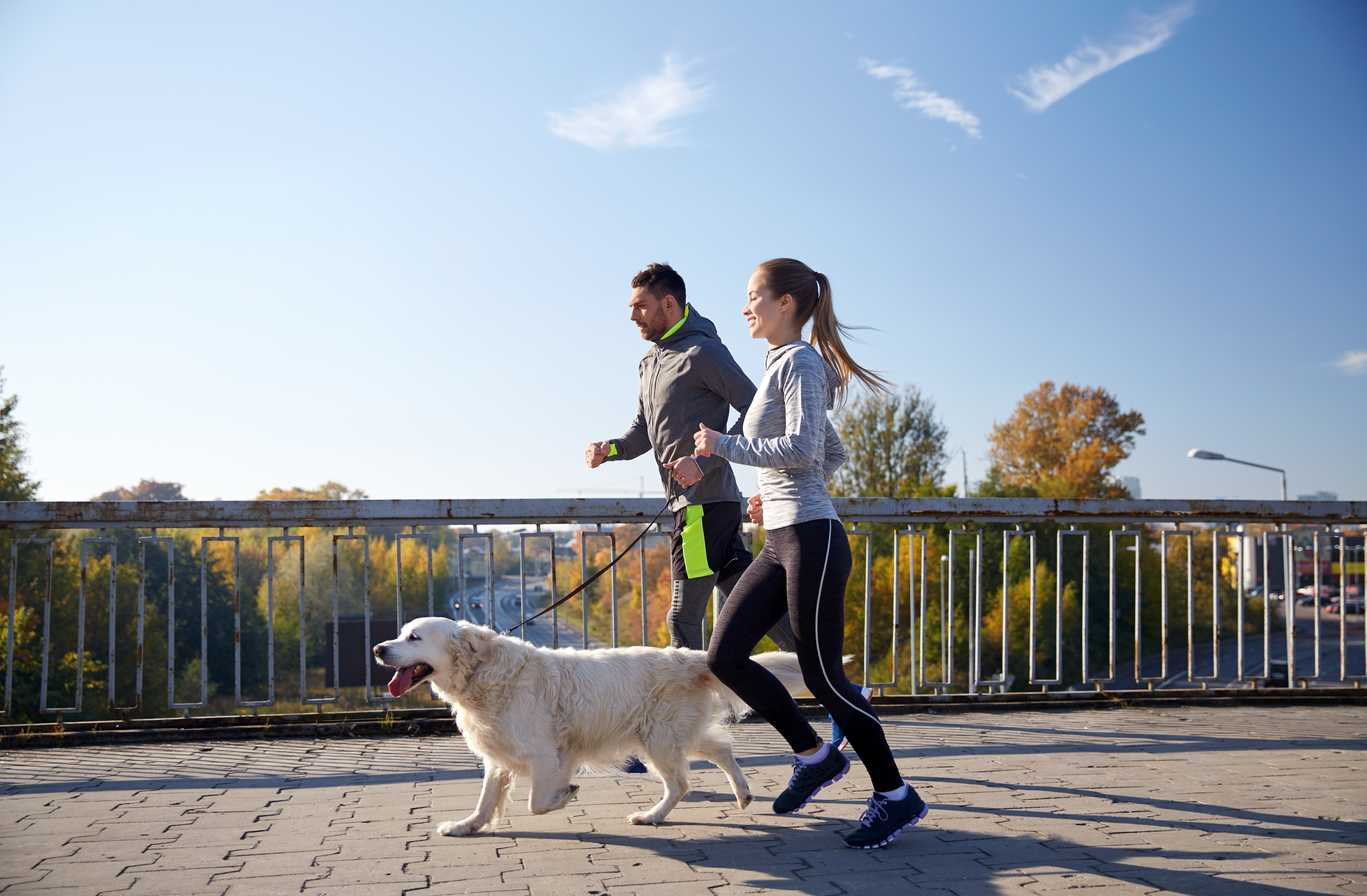
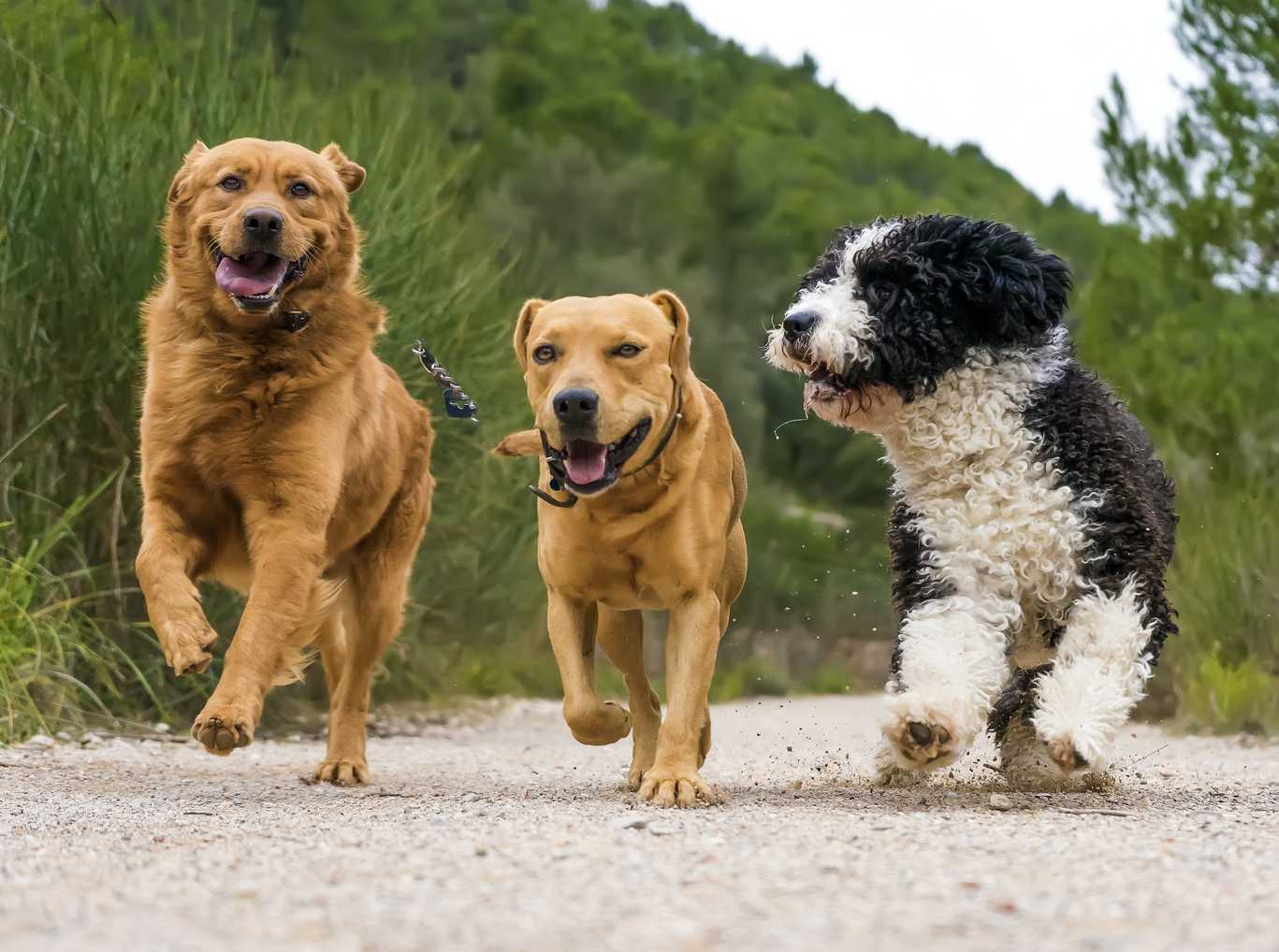

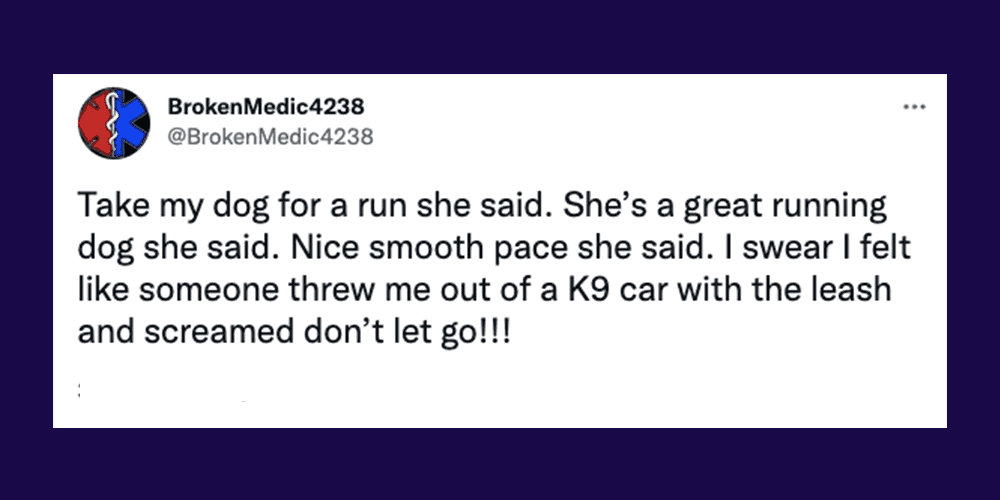

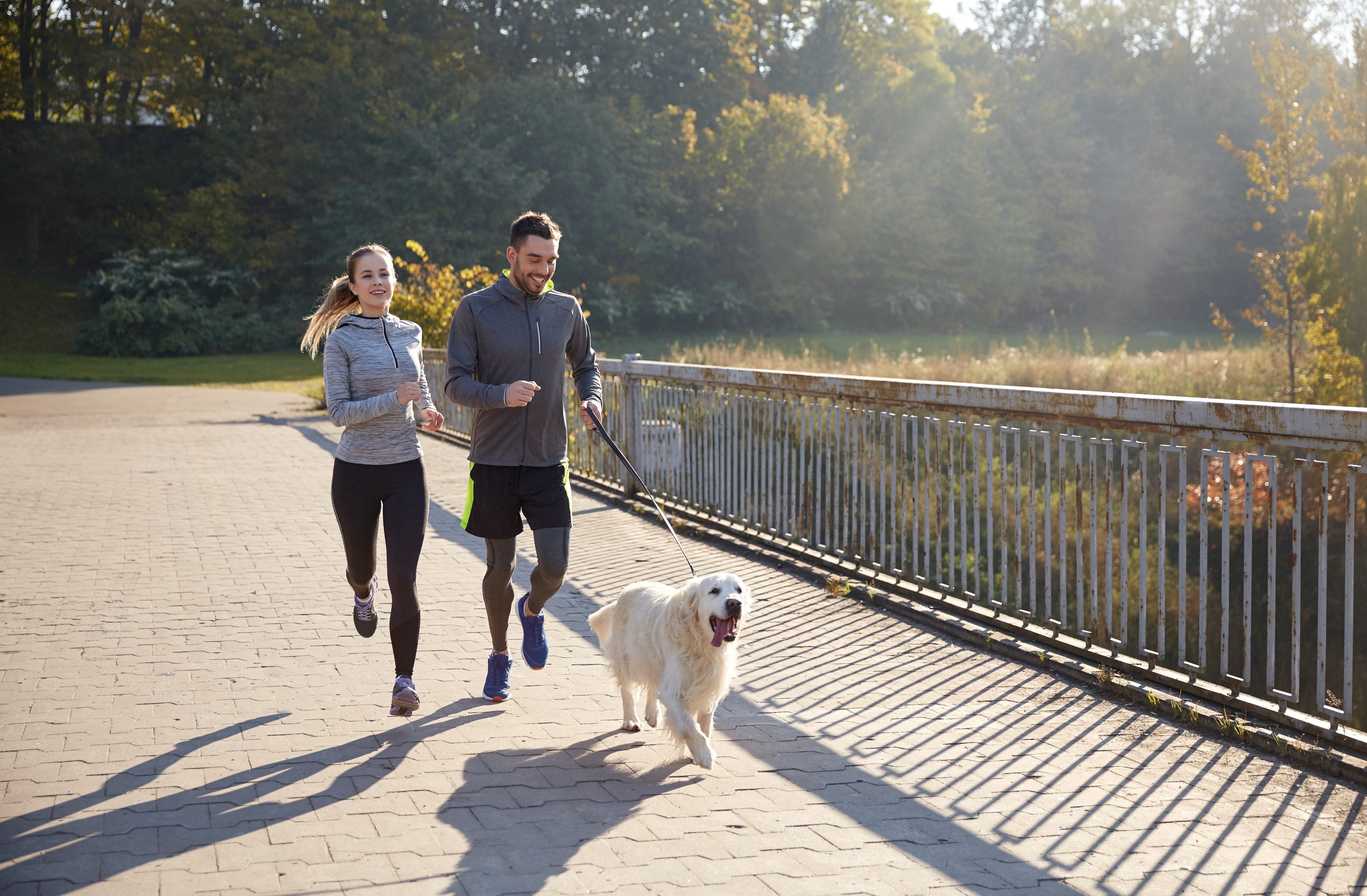


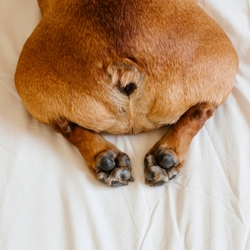
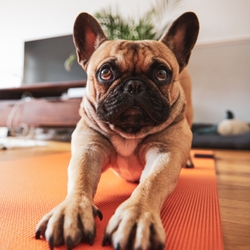

Comments: